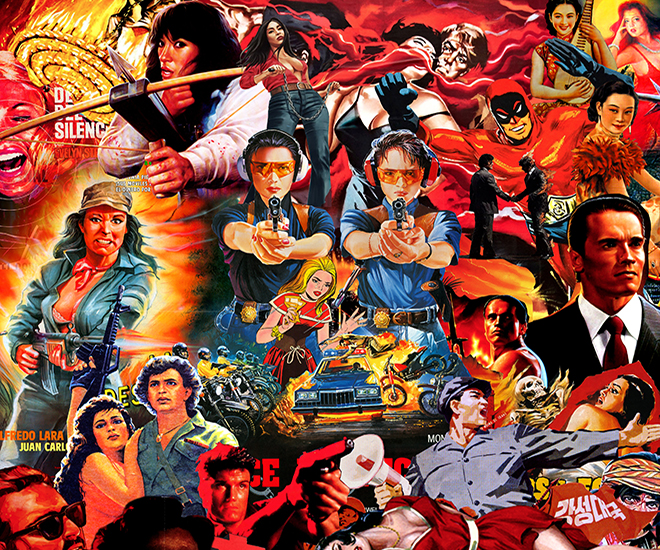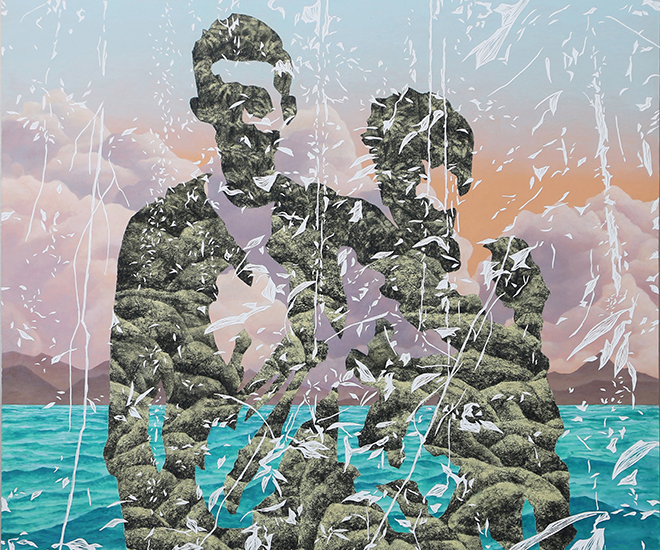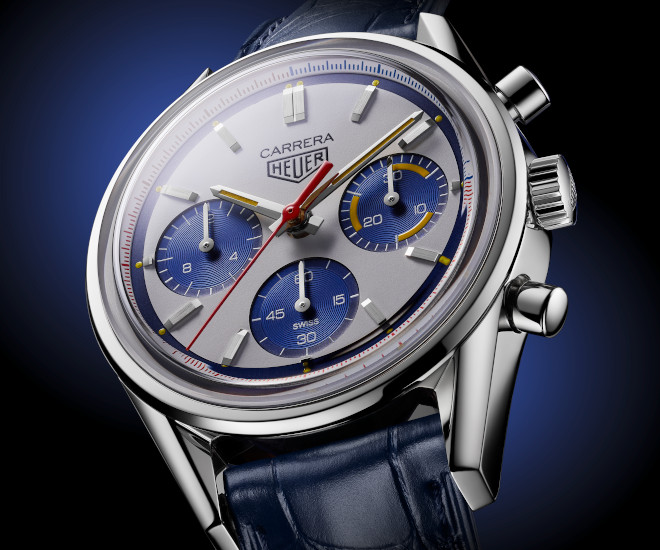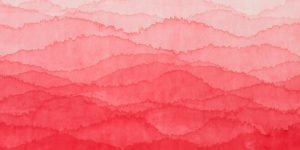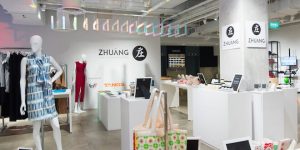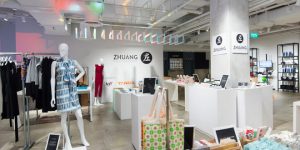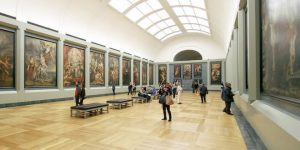Art clusters in Tokyo, Japan from Tennozu Isle to Roppongi, Jingumae and Kiyosumi-Shirakawa
Tokyo Tomo, which offers bespoke Tokyo excursions with a focus on art, food, fashion and design, guides us through the four art clusters in Japan’s capital

Interior view of an art gallery in Tokyo
With a recent spurt of development driven by the prospect of the upcoming 2020 Olympic Games, the sprawling chaos of the Japanese capital has never seemed so urgent, enticing — and unnavigable. With an antiquated address system that relies on ambiguously demarcated block numbers (that seldom run in a linear sequence), and streets that mostly lack names, except for the biggest thoroughfares, Tokyo continues to befuddle even the most determined and well-prepared urban explorers.
The city’s art scene is no different. It’s known for playing a constant game of musical chairs every few years, no thanks in part to fickle landlords, difficult spaces, and a constant hack-and-rebuild ethos that forces art galleries to scuttle and regroup in new locations.
So where are these art clusters now? Here’s a short list of some of the main areas where art lovers might be able to spend a profitable afternoon in Tokyo.

Interior view of PIGMENT
Tennozu Isle
This bayside quarter, located just one monorail stop away from JR Hamamatsucho station, has become something of a rejuvenated post-industrial art district in recent years thanks to Warehouse TERRADA, a leading storage company that has been spearheading and supporting a number of art and design-related initiatives. Newly opened in the fall of last year is the TERRADA Art Complex, a high-ceilinged warehouse building housing four of the capital’s top contemporary art galleries: URANO, Yuka Tsuruno Gallery, Kodama Gallery, and Yamamoto Gendai.
Closer to Warehouse TERRADA’s corporate headquarters is PIGMENT, a sleek boutique, showroom, and lab dedicated to art materials and supplies. A series of streamlined bamboo screens and louvred patterns designed by Kengo Kuma forms the perfect backdrop to the stunning walls of Japanese mineral pigments, animal glue supplies, inkstones, and brushes. Just a short hop away is Archi-Depot, a mini-museum of architectural models by some of the country’s leading architects and architectural firms, like Shigeru Ban, Sou Fujimoto, and Kengo Kuma.

Complex 665
Roppongi
Home to several of the capital’s top art institutions, including the Mori Art Museum, the National Art Centre Tokyo, 21_21 DESIGN SIGHT, and the Suntory Museum of Art, Roppongi is also where art lovers can spend a full afternoon exploring contemporary art galleries. In the Piramide Building, you’ll find Ota Fine Arts, whose founder Hidenori Ota has worked with superstar artist Yayoi Kusama since the late 1980s and also shows younger artists like Tomoko Kashiki and Singapore’s Zai Kuning; Wako Works of Art, which shows primarily European artists like Gerhard Richter, Joan Jonas, and Fiona Tan; Zen Foto Gallery, where you’ll find mostly Japanese and Chinese photography; and YKG/Yutaka Kikutake Gallery, run by a former director of Taka Ishii Gallery, which shows upcoming Japanese artists like Nerhol and Reina Mikame. And slated to join them this spring is French dealer Emmanuel Perrotin, whose ground-floor space will be the latest addition to a gallery empire with existing outposts in Paris, New York, Hong Kong, and Seoul.
A new addition to the Roppongi district that opened last October is Complex 665, a modest three-storey building nestling in the shadow of Roppongi Hills that houses Taka Ishii Gallery, ShugoArts, and Tomio Koyama Gallery. Taka Ishii showcases both Japanese and international artists like Sterling Ruby, Risaku Suzuki, and Elmgreen & Dragset, ShugoArts represents the likes of Ritsue Mishima, Lee Kit, and Shigeo Toya, while Tomio Koyama shows work by Shooshie Sulaiman, Mika Ninagawa, and Yoko Ono.

Yurie Nagashima at Maho Kubota Gallery
Jingumae
Primarily a residential neighbourhood on the fringe of teen fashion mecca Harajuku, Jingumae is slowly coalescing into a creative neighbourhood, not just for art, but also for gourmet dining. Its northern edge, Jingumae 2-chome, is home to Jimbocho Den, a two-Michelin-starred establishment helmed by maverick chef Zaiyu Hasegawa, which moved into spanking new premises at the beginning of this year, while down the street is the Japanese-French restaurant Florilège. Led by Hiroyasu Kawate, the intimate 22-seater was named Asia’s One to Watch by Asia’s 50 Best Restaurants last year. Meanwhile, Maho Kubota Gallery, one of Tokyo’s newest contemporary art galleries opened in March last year down a quiet street in the same neighbourhood. A former director at SCAI The Bathhouse, Kubota also serves as a committee member for Art Basel Hong Kong, and her modest but immaculate white cube space shows everything from Julian Opie to Japanese ‘girly’ photographer Yurie Nagashima.
Closer to JR Harajuku station just a few steps from Takeshita Dori, you’ll find the Japan outpost of LA-based gallery Blum & Poe, which moved into a light-filled space overlooking the verdant grounds of the Meiji Shrine in 2014. Recent shows have focused on reappraisals of key Japanese Mono-ha (“school of things”) artists like Kishio Suga and Susumu Koshimizu, as well as Western masters like Robert Morris, Richard Prince, or Juergen Teller.

Interior view of Sakoto Oe Contemporary
Kiyosumi-Shirakawa
Another semi-cluster of galleries has congregated in the Kiyosumi-Shirakawa neighbourhood of east Tokyo, within walking distance of the Museum of Contemporary Art Tokyo (MOT, currently closed for major renovations). Satoko Oe Contemporary, run by a former director of ShugoArts, opened in February 2016 on a quiet street of this shitamachi (old down town) neighbourhood, mixing with other new arrivals like cafes and design ateliers (nearby, you’ll find cult coffee roaster Blue Bottle Coffee’s workshop). Oe shows younger Japanese artists working in an eclectic, freestyle fashion such as Chihiro Mori and Teppei Kaneuji. Also in the area is MUJIN-TO Production, headed by Rika Fujiki, which shows some of Japan’s hottest emerging artists like Chim↑Pom, Lyota Yagi, and Meiro Koizumi.
Soon to join the Kiyosumi gallery district this spring in a new location close to the MOT is Kana Kawanishi Gallery, which focuses on experimental work by younger emerging Japanese photographers. Kawanishi, who studied fashion history in Tokyo and New York and previously served as the Tokyo coordinator for Rizzoli before opening her eponymous gallery in 2015, is careful to “not look too much at trends,” choosing rather to just focus on “introducing good artists with strong philosophies,” such as Ryoichi Fujisaki and Hideo Anze.
For more information, please visit tokyotomo.org.
This article was written by Darryl Wee and originally published in Art Republik.
